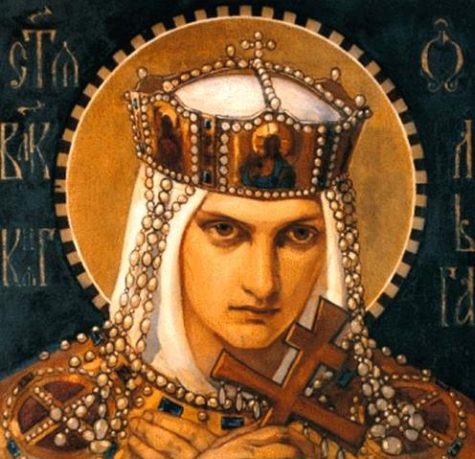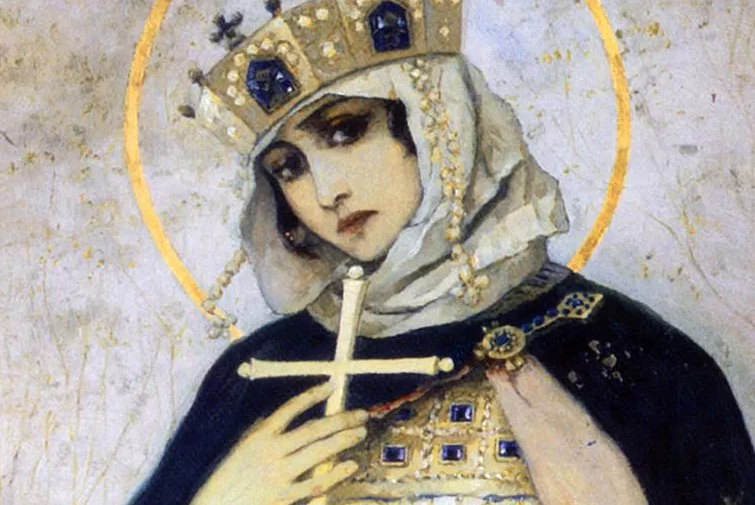Saint Olga of Kiev
April 11, 2022
Olga was a queen reagent from 945 until 960 for her son Sviatoslav. She was most known for her brutal revenges towards the Dervilans, a tribe who had brutally killed her husband, Igor of Kiev. They had tied him up in two tree trunks which were released and he was split in two…a truly gruesome way to see the end of your life.
The Dervilians sent twenty people by boat to pass the kings message for Olga to marry her late husbands murder, Prince Mal. When they arrived in her court they said to the queen: “to report that they had slain her husband … and that Olga should come and marry their Prince Mal.”
To which Olga responded, “Your proposal is pleasing to me, indeed, my husband cannot rise again from the dead. But I desire to honor you tomorrow in the presence of my people. Return now to your boat, and remain there with an aspect of arrogance. I shall send for you on the morrow, and you shall say, “We will not ride on horses nor go on foot, carry us in our boat.” And you shall be carried in your boat.” The Drevlians thought that being carried was a great honor, until they were dropped in a trench that had been dug and were burned alive per Olga’s orders. A very vengeful woman she was, but her story does not end here.

She then summoned a second Drevlian embassy and they sent their best men. When they arrived, Olga told her people to start a bath for them. She invited the men to dine with her, but they had to take a bath first. The Drevlians entered the bathhouse, and Olga ordered for the doors to be bolted shut and then she set the building on fire.
Olga sent a message to the Drevlians, she told them to prepare the city where her husband was killed because she wanted to hold a funeral feast and mourn his death. Indeed she did weep for him, but she also had planned out an attack for that day.
The Drevlians sat down to join the feast that was being held. Once they got drunk and incapable of protecting themselves, she ordered her men to start the massacre. And according to the Primary Chronicle five thousand Drevlians were killed. Olga returned to Kiev to prepare the army to finish off the survivors.
She laid her siege on the Drevlians base at Iskorosten(modern day city of Korosten in Ukraine). Olga tricked the people inside the city with a peace offer and made a small request to them, “Give me three pigeons…and three sparrows from each house.” and the Drevlians did as she had requested, they sent them the birds.
When Olga had the birds in her possession she ordered her men to tie sulfurous cloth to one of each of the birds legs. When she released the birds and they went back to their nests, the sulfur set every building on fire simultaneously. Then she ordered her soldiers to capture everyone who was fleeing the city and took them into slavery. That was the end of her rampage of her husband’s revenge.
But how did she become a saint?
In the 950’s, Olga traveled to Constantinople to visit Emperor Constantine. She converted into Christianity with the assistance of the Emperor and the Patriarch. Olga takes the name of Helena after Saint Helena, the mother of Constantine the Great. Constantine seemed to have a desire to take Olga as his wife seeing as she was, “fair of countenance and wise as well,” he knew that he would gain power over Rus. But Olga had asked him to Baptize her knowing that he would become her godfather and them marrying would be spiritual incest.
When the emperor summoned Olga he said that he wished to marry her. She said, “How can you marry me, after yourself baptizing me and calling me your daughter? For among Christians that is unlawful, as you yourself must know.” The emperor replied, “Olga, you have outwitted me.”
Before Olga died, she had attempted to convert her son into Christianity but to no avail. He thought that his people would ridicule him, but she said that they would follow him and convert like him.
In 1547, after 600 years of her death, the Russian Orthodox Church declared Olga a saint. Keeping true to her name, Olga is the saint of widows and converts.
First Picture by: M. Nesterov, “Princess Olga,” Vladimir Cathedral, 1892 from website National Catholic Register
Second Picture by: Jone Johnson Lewis, Who Was Princess Olga of Kiev



